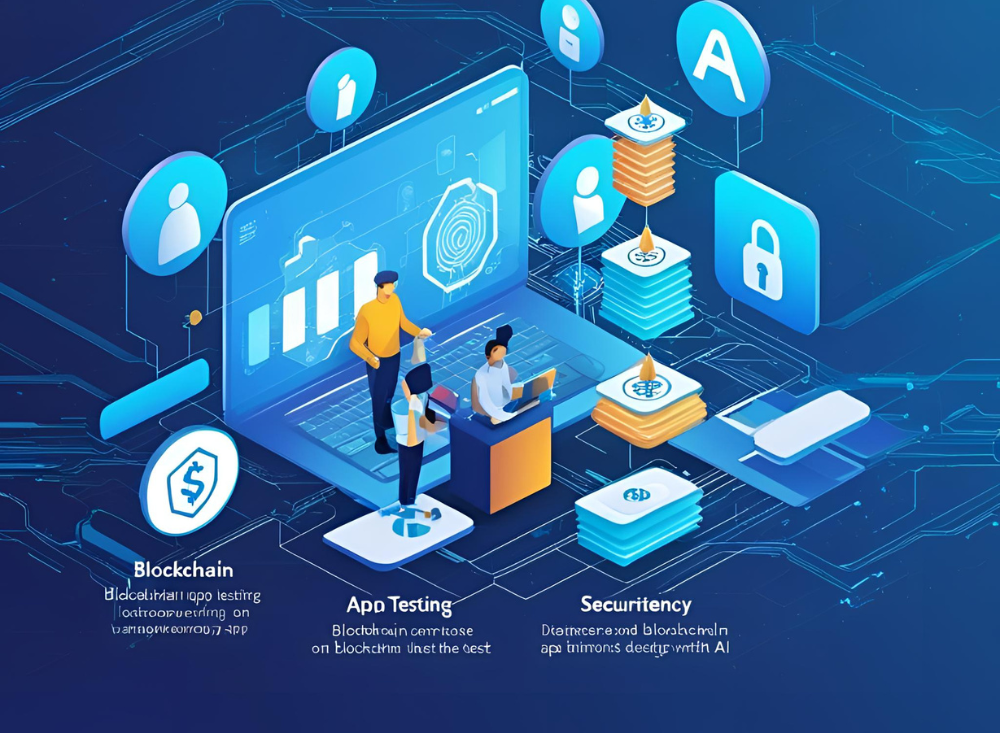
In a digital world increasingly driven by decentralization and cryptographic integrity, blockchain applications are becoming core components of finance, supply chains, healthcare, and more. These apps promise trust, transparency, and immutability—but these promises are only as strong as the software behind them.
As blockchain solutions grow more complex, the testing landscape must evolve to match. This is where artificial intelligence (AI) steps in—not just as a tool for automation, but as an intelligent testing partner capable of keeping up with the pace and intricacy of decentralized systems.
Why Blockchain Testing Is Unique
Blockchain applications introduce a unique set of testing challenges that go far beyond those of traditional web or mobile apps. These include:
🧾 Smart Contract Accuracy
Smart contracts execute business logic automatically. They are immutable once deployed, meaning a single bug can lead to irreversible consequences—financial loss, security breaches, or reputational damage.
⛓ Distributed Environment Complexity
Testing a decentralized app (dApp) means accounting for multiple nodes, consensus protocols, and network latency—factors that are inherently hard to simulate.
🔐 Security and Integrity
Blockchain applications must resist tampering, reentrancy attacks, denial-of-service vectors, and consensus manipulation. Testing for these is critical.
📈 Performance and Scalability
Blockchains are known to slow under load. Testing for throughput, gas optimization, and transaction confirmation time is essential for usability.
AI’s Role in Blockchain Testing
AI doesn’t replace QA teams; it augments them, particularly in areas where pattern recognition, data analysis, or decision-making at scale are required.
Here’s how AI is transforming blockchain testing:
1.Smart Contract Fuzzing and Vulnerability Detection
AI models can intelligently fuzz smart contract inputs, generating edge cases and attack vectors far faster than humans. Combined with symbolic execution, this helps uncover vulnerabilities like integer overflows, reentrancy bugs, and logic flaws.
2.Gas Consumption Optimization
AI can analyze contract behavior and suggest optimizations to reduce gas fees without changing functionality—crucial for cost efficiency.
3.Anomaly Detection in Testnets and Mainnets
By learning from historical transaction data, AI can detect anomalies such as sudden gas spikes, unusual node behaviors, or invalid state transitions during regression testing.
4.Predictive Testing for Fork Scenarios
AI models can simulate and predict the effects of forks or consensus changes under various edge conditions—something difficult to model manually.
5.Security Behavior Modeling
Using unsupervised learning, AI tools can identify outliers in smart contract behavior or network transactions that may indicate hidden bugs or exploits.
From Static Tests to Adaptive Intelligence
Traditional blockchain testing often relies on static test cases and rule-based scripts. While necessary, these methods can fall short in systems that evolve continuously or react dynamically to complex inputs.
AI introduces a new testing paradigm: adaptive test generation. These systems analyze contract interactions, network behavior, and chain state to generate and evolve tests in real time, keeping pace with fast-changing Web3 ecosystems.
Platforms like Genqe.ai are pioneering this shift, using AI to analyze smart contracts, generate intelligent test paths, and monitor behavior across testnets and mainnets alike. With automated traceability and AI-driven test suggestions, Genqe.ai helps QA teams test with confidence in the blockchain world.
Testing Strategies Enhanced by AI
Here’s how AI improves different layers of blockchain QA:
| Layer | Traditional Approach | AI-Enhanced Testing |
|---|---|---|
| Smart Contracts | Manual auditing, unit tests | AI-guided fuzzing, symbolic execution, behavioral analysis |
| Transaction Flows | Scripted testing, hardcoded scenarios | Dynamic generation of test cases from real-world data |
| Network Behavior | Node simulation under test environments | Predictive modeling, anomaly detection |
| Security Audits | Static analysis tools | AI-driven exploit discovery & threat modeling |
| Performance & Load | Load simulators | Predictive stress testing, gas cost analysis |
Ensuring Transparency and Trust
Blockchain’s core promise is trust through transparency—but this only holds if the applications built on top of it are rigorously validated.
AI helps QA teams ensure:
- Fairness: By analyzing all paths, including rare and unusual ones.
- Predictability: By modeling system behavior and surfacing irregularities.
- Auditability: By capturing detailed execution traces and patterns.
- Security: By proactively detecting risks and potential exploits.
This is especially crucial in decentralized finance (DeFi), identity management, NFT marketplaces, and DAOs—where trust is currency and failure can be catastrophic.
Conclusion: A New Era for Blockchain QA
Testing blockchain apps in 2025 is no longer just about validating function. It’s about ensuring trust, resilience, and transparency in decentralized systems—and that requires a new breed of testing tools.
By merging the analytical power of AI with the rigorous demands of blockchain, we’re entering an era where quality isn’t just built into code—it’s continually learned, monitored, and optimized.
With platforms like Genqe.ai helping bridge the gap between human oversight and intelligent automation, blockchain QA is ready to meet the moment—scalable, secure, and smarter than ever before.